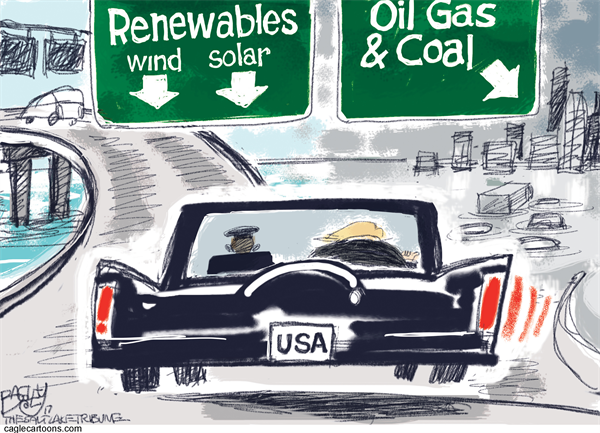Reasons for Hope
Turning the Tide of Climate Change Amid a Massive Wildfire Season

When the massively destructive Thomas Fire stopped burning, many of us thought it would represent the largest conflagration in California’s history for years to come. Thomas’s 280,000-acre record was tragically eclipsed just a handful of months later, when the Mendocino Complex Fire burned more than 410,000 acres. At more than 767,000 acres in size, as I write, the LNU Lightning Complex fire and the SCU Lightning Complex fire — the two biggest blazes that are still burning in Northern California — together crush the Mendocino Complex Fire record, and it is only September.
As a lecturer in the Environmental Studies Department at UC Santa Barbara, I have to answer many tough questions. Recently, a student told me how distraught he was about the massive LNU/SCU fires and asked me if there’s anything hopeful about the situation. Since I teach that there are always reasons to be optimistic, and I believe strongly that adults have a particular responsibility to provide hope to young people, I dug deep to come up with a multi-part answer.
Get the top stories in your inbox by signing up for our daily newsletter, Indy Today.
To begin with, ecosystems are remarkably resilient. Areas scorched by recent fires in Central and Southern California illustrate this. More than 88 percent of the Santa Monica National Recreation Area was severely burned by the Woolsey Fire, and afterward, the area looked post-apocalyptic. When you visit today, there is growth and regeneration everywhere; the National Park Service reports that 13 kittens were born to five mountain lion mothers this summer. The same is true of areas burned by the Thomas and other fires in the Santa Ynez Mountains. We are surrounded by the hopeful evidence of regrowth and rejuvenation.
Humans are also astonishingly resilient. My husband and I live just a few long blocks downwind from the 2018 Holiday Fire. It destroyed a lot of homes and structures two years ago, in addition to vegetation. Virtually all those homes have been rebuilt using more fire-resistant materials and strategies. Visiting the area now, it is almost impossible to see any evidence of the fire. Among other adaptations, an old, struggling avocado farm that was destroyed has now been replaced with young, thriving coffee plants. Elsewhere, other Californians have built quickly and smartly upon the ashes of recent fires. Our species is resilient.
That being said, massive fires are exacting a terrible, immediate toll on life, health, property, wildlife, fiscal budgets, and more. To have significant hope going forward, we need more than resilience. We need to take meaningful actions to help stop the costly, climate-change-fueled escalation of these conflagrations.
Especially now, our fires can and should have an impact on the election. This election is certainly the most important in our lifetimes regarding the future of our country and planet. Seeing the vivid, tragic, and expensive destruction of these record-breaking fires can contribute to the change that needs to occur in November, if we all act on it.
But will any of this matter? Or is it too late? Through individual and collective action, can we really turn the tide on climate change? A brilliant new study by MacArthur “Genius Grant” winner Saul Griffith comprehensively and convincingly demonstrates that we can reach carbon-emission reduction targets and eliminate 70- 80 percent of U.S. carbon emissions by 2035 through quickly deploying existing electrification technologies, including rooftop solar and electric cars. If you want hope, read the Vox article “How to drive fossil fuels out of the US economy, quickly,” about Griffith’s Rewiring America report (rewiringamerica.org/handbook). For an added dose of data-based optimism, visit Project Drawdown (drawdown.org). We can do this.
Then, if you have not done so already and can afford to do so, cover your rooftop with solar panels and drive an electric car. Simultaneously, we need to insist that the U.S. offer financing options so that everyone else can do the same, including purchasing battery storage. This is just the start, but what an exciting start, one that will create jobs and boost our economy for all people, including our youth.
Hope is an essential fuel for humans, but it must be accompanied by action. While the fires are still burning, can I honestly tell my students that there are reasons for hope and action? Absolutely.
In addition to lecturing at UCSB, Deborah Williams recently launched a website, 50 Great Public Lands Destinations — Santa Barbara and Beyond, and is a member of the Community Environmental Council’s Partnership Council.
Every day, the staff of the Santa Barbara Independent works hard to sort out truth from rumor and keep you informed of what’s happening across the entire Santa Barbara community. Now there’s a way to directly enable these efforts. Support the Independent by making a direct contribution or with a subscription to Indy+.



